Abstract
This paper addresses ecological studies in public health research in terms of the logic of their analysis. It makes several distinctions between studies based on ecological and individual units. First, it identifies the variables common to both types of study and those particular to ecological studies. Second, it shows how ecological and individual units combine in two classes: unmixed (purely ecological, purely individual) and mixed. Third, it details how the relationships among and between individual and grouped units (expressed in terms of regression coefficients between independent and dependent variables) yield four coefficients: for all individual members; for all groups; for all individuals within each group; and for all individuals within groups (a weighted average). Equipped with an understanding of the dimensions involved at ecological and individual levels and of the relationships between them, researchers are in a position to exploit the public health potential of the ecological approach.
Full text
PDF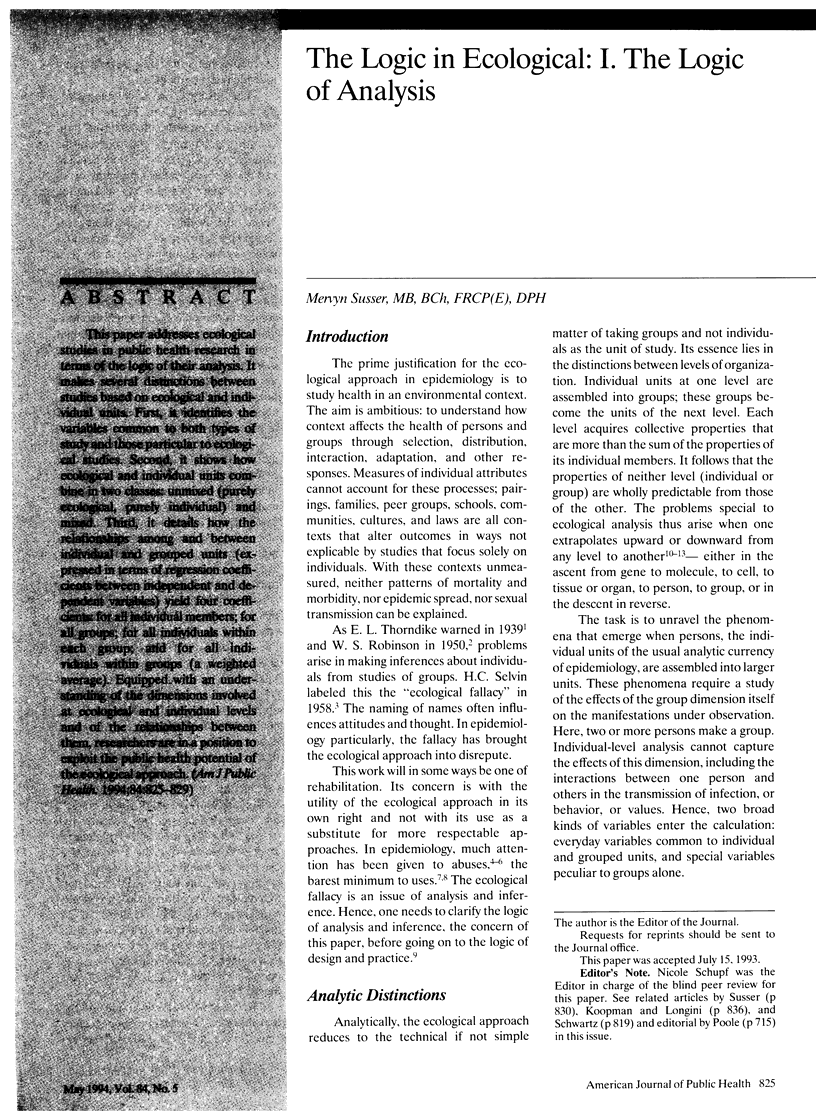
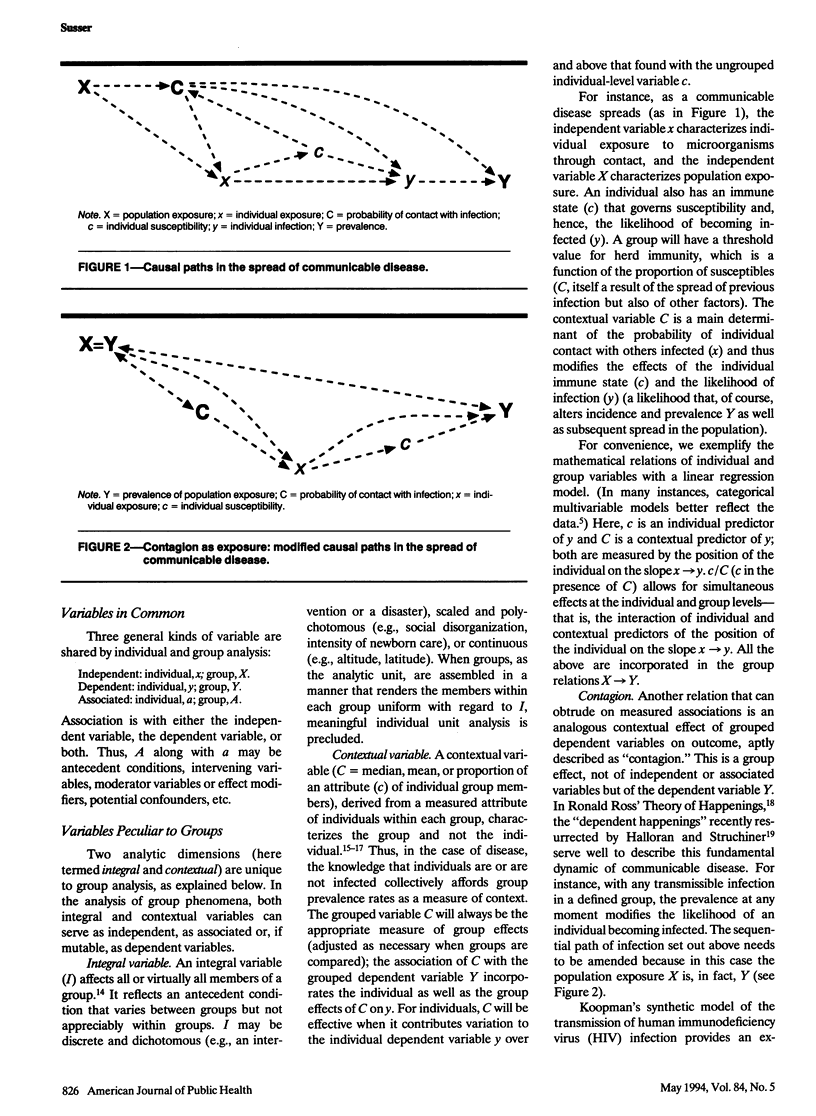
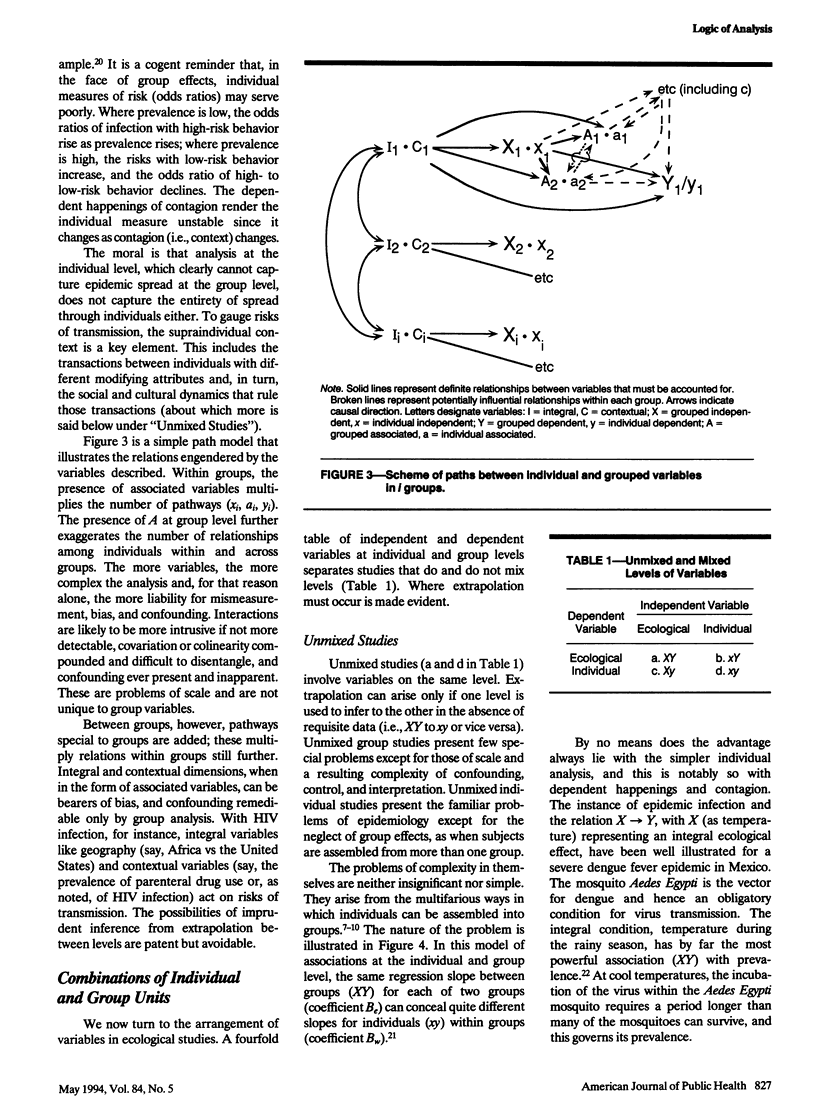
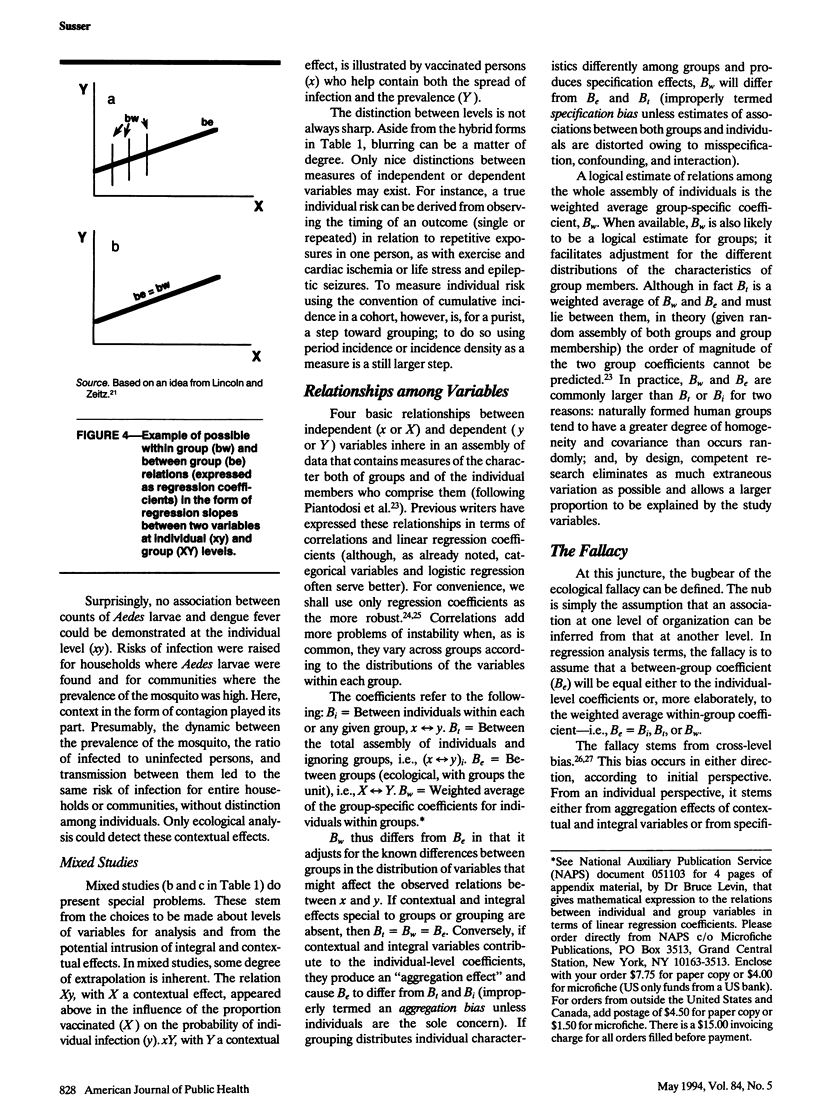
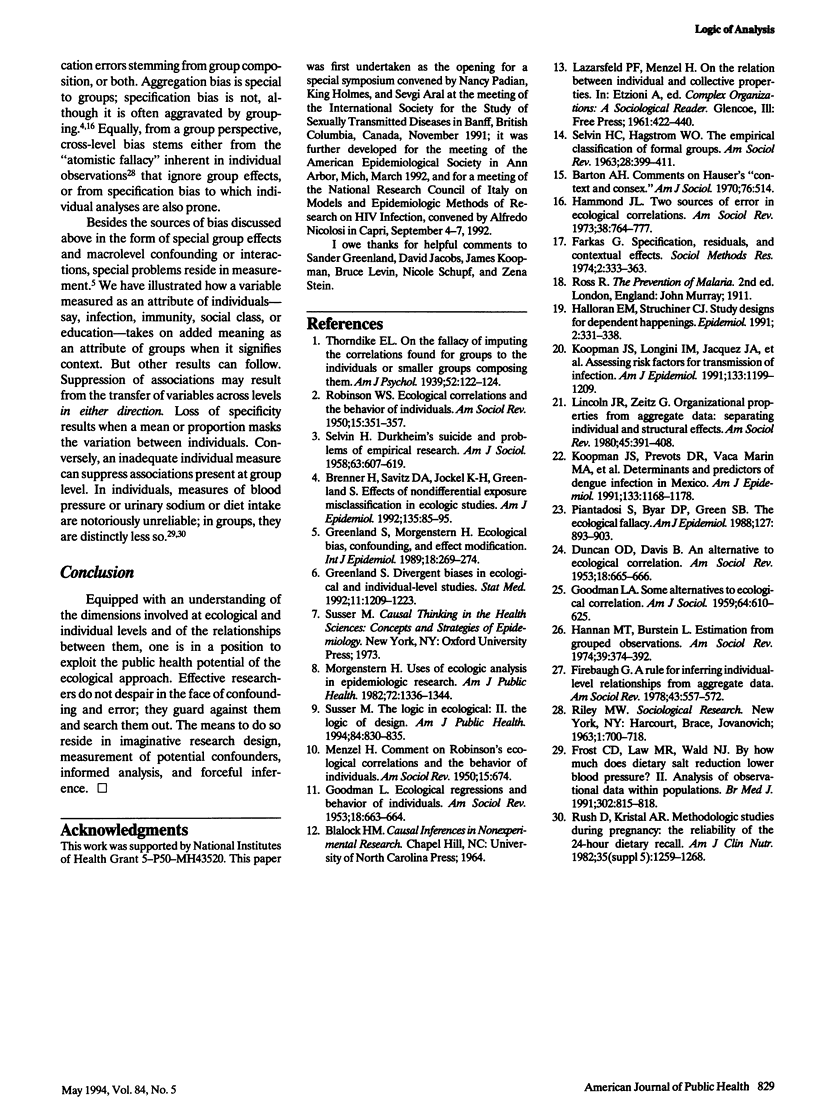
Selected References
These references are in PubMed. This may not be the complete list of references from this article.
- Brenner H., Savitz D. A., Jöckel K. H., Greenland S. Effects of nondifferential exposure misclassification in ecologic studies. Am J Epidemiol. 1992 Jan 1;135(1):85–95. doi: 10.1093/oxfordjournals.aje.a116205. [DOI] [PubMed] [Google Scholar]
- Frost C. D., Law M. R., Wald N. J. By how much does dietary salt reduction lower blood pressure? II--Analysis of observational data within populations. BMJ. 1991 Apr 6;302(6780):815–818. doi: 10.1136/bmj.302.6780.815. [DOI] [PMC free article] [PubMed] [Google Scholar]
- Greenland S. Divergent biases in ecologic and individual-level studies. Stat Med. 1992 Jun 30;11(9):1209–1223. doi: 10.1002/sim.4780110907. [DOI] [PubMed] [Google Scholar]
- Greenland S., Morgenstern H. Ecological bias, confounding, and effect modification. Int J Epidemiol. 1989 Mar;18(1):269–274. doi: 10.1093/ije/18.1.269. [DOI] [PubMed] [Google Scholar]
- Halloran M. E., Struchiner C. J. Study designs for dependent happenings. Epidemiology. 1991 Sep;2(5):331–338. doi: 10.1097/00001648-199109000-00004. [DOI] [PubMed] [Google Scholar]
- Koopman J. S., Longini I. M., Jr, Jacquez J. A., Simon C. P., Ostrow D. G., Martin W. R., Woodcock D. M. Assessing risk factors for transmission of infection. Am J Epidemiol. 1991 Jun 15;133(12):1199–1209. doi: 10.1093/oxfordjournals.aje.a115832. [DOI] [PubMed] [Google Scholar]
- Koopman J. S., Prevots D. R., Vaca Marin M. A., Gomez Dantes H., Zarate Aquino M. L., Longini I. M., Jr, Sepulveda Amor J. Determinants and predictors of dengue infection in Mexico. Am J Epidemiol. 1991 Jun 1;133(11):1168–1178. doi: 10.1093/oxfordjournals.aje.a115829. [DOI] [PubMed] [Google Scholar]
- Morgenstern H. Uses of ecologic analysis in epidemiologic research. Am J Public Health. 1982 Dec;72(12):1336–1344. doi: 10.2105/ajph.72.12.1336. [DOI] [PMC free article] [PubMed] [Google Scholar]
- Piantadosi S., Byar D. P., Green S. B. The ecological fallacy. Am J Epidemiol. 1988 May;127(5):893–904. doi: 10.1093/oxfordjournals.aje.a114892. [DOI] [PubMed] [Google Scholar]
- Rush D., Kristal A. R. Methodologic studies during pregnancy: the reliability of the 24-hour dietary recall. Am J Clin Nutr. 1982 May;35(5 Suppl):1259–1268. doi: 10.1093/ajcn/35.5.1259. [DOI] [PubMed] [Google Scholar]
- Susser M. The logic in ecological: II. The logic of design. Am J Public Health. 1994 May;84(5):830–835. doi: 10.2105/ajph.84.5.830. [DOI] [PMC free article] [PubMed] [Google Scholar]


